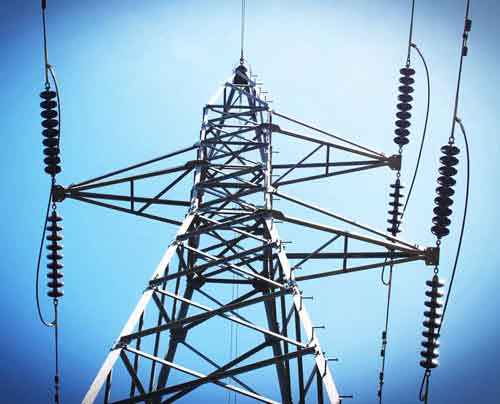Duke starts work on coal-to-gas plant
By Louisville, Courier-Journal
NFPA 70e Training - Arc Flash
Our customized live online or in‑person group training can be delivered to your staff at your location.

- Live Online
- 6 hours Instructor-led
- Group Training Available
Jim Rogers, Duke Energy's president and CEO, told Gov. Mitch Daniels and local officials that the 630-megawatt plant's technological innovations were akin to the United States' manned lunar program that beat the former Soviet Union to the moon in the 1960s.
"With this plant we're taking a giant leap for our country," he said.
The plant - touted as the first full-scale project of its kind - is scheduled to go online in 2012 near the town of Edwardsport. It will use advanced coal-gasification technology to produce power with far fewer emissions than conventional coal-fired plants.
The Sierra Club and other groups sued Duke Energy in federal court in April, hoping to halt the project on the White River in Knox County. The plant's opponents say it will leave consumers saddled with rate increases for years to come, and that its cost could only grow.
The plant's original cost was projected at $1.3 billion to $1.6 billion, but earlier this year the revised price tag rose to about $2.35 billion.
Duke Energy spokeswoman Angeline Protogere said the company expects the cost of the project to result in an 18 percent rate increase that would be phased in between now and 2013.
The ceremony was billed as a "celebration" because ground preparation actually began shortly after the plant's state air permit was approved Jan. 25.
Daniels said after the event that the plant will be worth its high cost because its pollution-removal technologies will open more of southwestern Indiana's coal deposits for use as fuel.
Low-sulfur coals are currently being shipped in from other states to reduce air pollution at Indiana's power plants because much of the state's coal has a high sulfur content, he said.
"Our utility customers spend a billion dollars a year to buy coal from other states because ours with previous technology is difficult to burn cleanly," he said. "We should pay that billion dollars to Hoosiers, and today marks the start of that new era."
Daniels also said the Duke Energy plant would boost the region's economy after years of hard times.
Earlier this year, the U.S. Department of Energy halted a futuristic low-pollution coal power plant called FutureGen announced only months before for Mattoon, Ill., after costs soared for that $1.8 billion project.
That plant was supposed to be virtually pollution-free and produce both electricity and hydrogen - while its carbon dioxide, a leading greenhouse gas, was to be captured and stored deep underground.
The New York Power Authority and NRG Energy Inc. recently canceled a $1.5 billion coal-gasification plant in New York, saying it would not produce affordable electricity
NRG's President and CEO David Crane went further, saying that the project was "in many ways, ahead of its times."
Protogere said that the Charlotte, N.C.-based company believes the Edwardsport plant is all the more important in the wake of cancellations of those and other so-called clean coal power plants.
"We think it's just in time. We have to find ways to burn coal cleanly," she said.
Unlike traditional coal-fired power plants that burn coal to produce electricity, coal gasification converts coal into a synthetic gas that's processed to remove pollutants such as mercury and sulfur. That gas is then burned in a traditional turbine power plant to produce electricity.
In May, Duke Energy announced that the plant would cost $365 million more than previously expected and boosted its request for a rate increase to state utility regulators.











